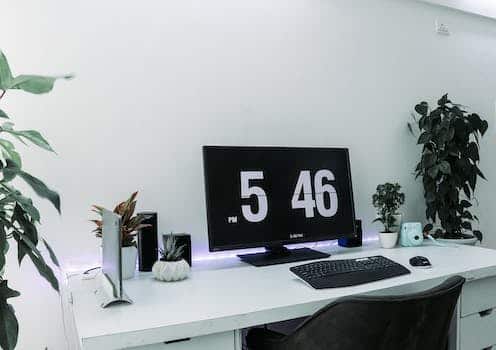Remote Desktop Connection is a powerful tool that allows users to access their computer or server remotely. However, sometimes users may encounter various issues that can disrupt the connection. In this article, we will explore the troubleshooting steps to resolve default remote desktop connection issues and ensure a seamless remote access experience.
- 1. Introduction
- 1.1. What is remote desktop connection?
- 1.2. Why use remote desktop connection?
- 1.3. Benefits of remote desktop connection
- 1.4. How does remote desktop connection work?
- 1.5. Popular remote desktop connection software
- 2. Setting up Remote Desktop Connection
- 2.1. Checking system requirements
- 2.2. Enabling Remote Desktop on the host computer
- 2.3. Configuring firewall settings
- 2.4. Setting up user accounts and permissions
- 2.5. Connecting to the host computer remotely
- 3. Advanced Features of Remote Desktop Connection
1. Introduction
When it comes to remote desktop connections, there are times when issues may arise that hinder the seamless experience users expect. Troubleshooting these default remote desktop connection issues is essential to ensure effective communication and uninterrupted workflow. This article aims to provide a comprehensive guide to identify and resolve common problems faced while using remote desktop connections. By understanding these issues and implementing the suggested solutions, users can enhance their remote desktop experience and overcome any obstacles that may arise.
1.1. What is remote desktop connection?
Remote Desktop Connection (RDC) is a feature in Microsoft Windows that allows users to connect and control a remote computer or server from another computer or device. It enables users to access files, applications, and desktops remotely, as if they were sitting in front of the remote machine.
Using RDC, individuals can establish a secure connection between their local computer and a remote computer over a network or the internet. This remote access technology is commonly used for troubleshooting, providing remote support, or accessing resources that are not physically present.
By using RDC, users can remotely log in to a computer or server, view and interact with the desktop, transfer files, run programs, and perform various tasks as if they were physically present at the remote location. This eliminates the need for physical access to the remote machine, saving time and enabling efficient remote collaboration.
Overall, remote desktop connection simplifies the process of accessing and controlling remote computers or servers, enhancing productivity and facilitating remote troubleshooting and assistance.
1.2. Why use remote desktop connection?
Remote Desktop Connection (RDC) is a valuable tool that allows users to access and control a computer or server from a remote location. This technology enables individuals to work from home, collaborate with colleagues, access files, and troubleshoot issues on another system without physically being present. There are numerous reasons why using remote desktop connection can be beneficial for both individuals and businesses.
Firstly, remote desktop connection provides convenience and flexibility. It eliminates the need for being physically present in the office or at a particular location to access important files or applications. With RDC, users can securely connect to their work computers or servers from any device with an internet connection, such as laptops, tablets, or smartphones. This allows for increased productivity and the ability to work from anywhere.
Secondly, remote desktop connection offers enhanced collaboration and teamwork. It allows multiple users to access and work on the same computer or server simultaneously. This feature is particularly useful for businesses with remote teams or for individuals who need to collaborate with colleagues on projects or troubleshoot issues together. RDC enables real-time collaboration, making it easier to share information, brainstorm ideas, and solve problems efficiently.
Additionally, using remote desktop connection enhances data security. By accessing a computer or server remotely, sensitive data remains on the host machine rather than being transferred to the remote device. This reduces the risk of data breaches or loss if the remote device is compromised or lost. RDC also provides secure authentication and encryption protocols, ensuring that connections are established securely and data transmissions are protected.
Furthermore, remote desktop connection simplifies troubleshooting and technical support. IT professionals can remotely access and diagnose issues on users’ computers or servers, eliminating the need for on-site visits. This saves time, reduces costs, and allows for quicker problem resolution. Users can also seek technical assistance from experts by granting them temporary remote access, facilitating efficient troubleshooting and support.
In conclusion, remote desktop connection is a valuable tool that offers numerous benefits. From convenience and flexibility to enhanced collaboration and data security, RDC enables individuals and businesses to work efficiently and remotely. It simplifies troubleshooting processes and enhances technical support, making it an essential tool for today’s digital workforce.
1.3. Benefits of remote desktop connection
Remote desktop connection offers several benefits for users. It allows individuals to access their computers or servers from anywhere in the world, as long as there is an internet connection. This means that users can work remotely, without being physically present at their office or workplace.
Another benefit of remote desktop connection is the ability to easily share files and collaborate with others. Users can transfer documents, folders, and files between the local and remote computers, making it convenient for team projects or accessing work-related files on the go.
Remote desktop connection also enhances productivity by providing quick and efficient access to resources. Users can open applications, use software, and access data on their remote computer as if they were sitting in front of it. This eliminates the need for physical presence and allows for seamless workflow regardless of location.
Furthermore, remote desktop connection offers a secure way to access computers and servers. It typically involves authentication and encryption protocols to ensure data privacy and protection. This makes it a reliable option for businesses and individuals who prioritize security.
In conclusion, remote desktop connection provides the flexibility, convenience, and security necessary for efficient remote work. Whether for personal use or professional purposes, it is a valuable tool for accessing resources and collaborating with others.
1.4. How does remote desktop connection work?
Remote Desktop Connection is a technology that allows users to access and control a computer remotely from another device. It enables individuals or IT professionals to connect to a remote computer over a network or the internet, as if they were sitting in front of it. This functionality is particularly useful for troubleshooting and resolving issues on remote computers without physically being present at the location.
By using Remote Desktop Connection, users can view the desktop of the remote computer and interact with it as if they were using it directly. This includes accessing files, running applications, managing settings, and performing various tasks just as they would on their own computer. The connection is established through a secure network protocol, ensuring that the data transmitted between the local and remote computers remains encrypted and protected from unauthorized access.
To establish a remote desktop connection, both the local and remote computers must have the necessary software installed. In most cases, the remote computer needs to have the Remote Desktop feature enabled and configured to allow incoming connections. The user initiating the connection must know the IP address or hostname of the remote computer and have the appropriate credentials to authenticate and gain access.
Once the connection is established, the remote desktop interface appears on the local computer’s screen, providing a real-time view of the remote desktop. The user can then navigate and control the remote computer using their own mouse, keyboard, and other input devices. This allows them to troubleshoot issues, install software, provide technical support, or perform any other tasks required on the remote computer.
In summary, Remote Desktop Connection is a powerful tool that facilitates remote access and control of computers. It simplifies troubleshooting by eliminating the need for physical presence and enables efficient remote management of systems. Understanding how it works can greatly enhance productivity and streamline IT support processes.
1.5. Popular remote desktop connection software
Remote desktop connection software allows users to access and control a computer from a remote location. This technology is widely used by businesses and individuals who need to work remotely or provide technical support. There are several popular remote desktop connection software options available, each with its own features and advantages. In this article, we will explore some of the top choices for remote desktop connection software and discuss their key benefits.
2. Setting up Remote Desktop Connection
To troubleshoot default remote desktop connection issues, one of the first steps is to set up the Remote Desktop Connection correctly. Follow these steps to ensure a successful setup:
1. Enable Remote Desktop on the target computer: Go to the Control Panel, navigate to System and Security > System, and click on the ‘Remote settings’ link on the left side. In the Remote tab, select the ‘Allow remote connections to this computer’ option.
2. Configure the firewall: If the target computer has a firewall enabled, make sure it allows incoming Remote Desktop connections. Add an exception for Remote Desktop in the firewall settings.
3. Ensure the target computer is turned on and connected to the network: Remote Desktop requires the target computer to be powered on and connected to the network.
4. Obtain the IP address or hostname of the target computer: You will need the IP address or hostname of the computer you want to connect to. This information can be found in the computer’s network settings.
5. Launch the Remote Desktop Connection application: Open the Remote Desktop Connection application on your local computer. This application is pre-installed on Windows operating systems.
6. Enter the IP address or hostname of the target computer: In the Remote Desktop Connection application, enter the IP address or hostname of the target computer in the ‘Computer’ field.
7. Click ‘Connect’ and enter credentials: Click the ‘Connect’ button to initiate the connection. You may be prompted to enter your username and password for the target computer.
By following these steps, you can set up the Remote Desktop Connection correctly and troubleshoot any default connection issues that may arise.
2.1. Checking system requirements
Before setting up Remote Desktop Connection, it is important to check the system requirements to ensure a smooth and efficient connection. Here are the steps to follow:
1. Operating System: Ensure that both the local and remote computers are running a compatible version of the Windows operating system. Remote Desktop Connection is supported on Windows 10, Windows 8.1, Windows 7, and Windows Vista.
2. Network Connection: Make sure that both computers are connected to the same network, either through Ethernet or Wi-Fi. A stable and reliable network connection is essential for Remote Desktop Connection to work properly.
3. User Account Control: Verify that you have administrative privileges on both the local and remote computers. This is necessary to configure the necessary settings and establish a remote connection.
4. Firewall Settings: Check the firewall settings on both computers to ensure that Remote Desktop Connection is allowed through. You may need to configure the firewall to permit incoming RDP (Remote Desktop Protocol) connections.
Once you have confirmed that the system requirements are met, you can proceed with setting up Remote Desktop Connection.
2.2. Enabling Remote Desktop on the host computer
To enable Remote Desktop on the host computer, follow these steps:
1. Open the System Properties by right-clicking on the ‘This PC’ or ‘My Computer’ icon and selecting ‘Properties’.
2. In the System Properties window, click on the ‘Remote settings’ link on the left side.
3. In the Remote tab, under the ‘Remote Desktop’ section, select the option ‘Allow remote connections to this computer’.
4. If you want to enable Remote Desktop only for network connections that are using Network Level Authentication, click on the ‘Advanced’ button and check the ‘Require Network Level Authentication’ box.
5. Click on the ‘Apply’ button and then ‘OK’ to save the changes.
6. Make sure that the host computer is connected to the network and has a valid IP address.
7. Take note of the host computer’s IP address as you will need it to connect remotely.
Once Remote Desktop is enabled on the host computer, you can proceed to set up the Remote Desktop Connection on the client computer to establish a remote connection.
2.3. Configuring firewall settings
To troubleshoot default remote desktop connection issues, it’s important to configure firewall settings properly. The firewall acts as a security barrier between your computer and the network, and sometimes it can block the proper functioning of remote desktop connections. Here are some steps to configure firewall settings for setting up Remote Desktop Connection:
1. Open the Windows Firewall settings by searching for ‘Firewall’ in the Start menu.
2. Click on ‘Allow an app or feature through Windows Firewall’ on the left-hand side.
3. Click on the ‘Change settings’ button and make sure that ‘Remote Desktop’ is checked.
4. If ‘Remote Desktop’ is not listed, click on the ‘Allow another app’ button and locate ‘Remote Desktop’ in the list. If it’s not there, click on ‘Browse’ and find ‘mstsc.exe’ in the Windows/System32 folder.
5. Once ‘Remote Desktop’ is selected or added, make sure both ‘Private’ and ‘Public’ checkboxes are checked.
6. Click ‘OK’ to save the changes.
By configuring the firewall settings to allow Remote Desktop Connection, you can ensure that the necessary network traffic for remote desktop access is not blocked. This should help in troubleshooting any default remote desktop connection issues you may encounter.
2.4. Setting up user accounts and permissions
Setting up user accounts and permissions:
When setting up Remote Desktop Connection, it is important to properly configure user accounts and permissions. This ensures that only authorized individuals have access to the remote desktop. Here are the steps to follow:
1. Create user accounts: Start by creating user accounts for each individual who needs remote access. This can be done through the computer’s administrative tools or user management settings.
2. Grant remote access permission: Once the user accounts are created, you need to grant them permission to access the remote desktop. In the computer’s system settings, navigate to the Remote Desktop section and select the users who should have remote access.
3. Configure network firewall: Configure the network firewall to allow Remote Desktop Connection traffic. This ensures that the connection is not blocked by the firewall.
4. Enable Remote Desktop: Enable the Remote Desktop feature on the computer you want to connect to. This can be done through the computer’s system settings or control panel.
5. Set up port forwarding: If the computer you want to connect to is behind a router or firewall, you may need to set up port forwarding to allow the Remote Desktop Connection.
By following these steps, you can properly set up user accounts and permissions for Remote Desktop Connection, ensuring a secure and efficient remote access experience.
2.5. Connecting to the host computer remotely
Connecting to the host computer remotely allows users to access and control their computer from a different location. This can be beneficial for various reasons such as troubleshooting issues, accessing files, or working remotely. One popular method to achieve this is by using the Remote Desktop Connection.
To set up Remote Desktop Connection, follow these steps:
1. Ensure that the host computer has Remote Desktop enabled. This can be done by right-clicking on the ‘This PC’ icon, selecting ‘Properties,’ and then clicking on ‘Remote settings.’ From there, check the box that says ‘Allow remote connections to this computer.’
2. On the computer you wish to connect from, open the Remote Desktop Connection application. This can typically be found by searching for ‘Remote Desktop Connection’ in the start menu or by typing ‘mstsc’ in the Run dialog.
3. In the Remote Desktop Connection window, enter the IP address or hostname of the host computer you want to connect to. If the host computer is on the same network, you can usually enter its name directly. Otherwise, you may need to obtain the IP address from the network administrator or use a service like DynDNS.
4. Click on the ‘Connect’ button to initiate the connection. If this is your first time connecting to the host computer, you may be prompted to verify its identity. Follow the on-screen instructions to complete this step.
5. Once the connection is established, you should see the host computer’s desktop on your screen. You can now interact with the host computer as if you were physically sitting in front of it.
It is important to note that setting up Remote Desktop Connection may require additional configuration, such as port forwarding on the router or firewall settings. It is advisable to consult the documentation or seek assistance from a network administrator if you encounter any difficulties.
3. Advanced Features of Remote Desktop Connection
The Remote Desktop Connection tool offers a range of advanced features that can be invaluable when troubleshooting default remote desktop connection issues. One such feature is the ability to customize display settings. With Remote Desktop Connection, users can adjust the screen resolution, color depth, and overall display quality to optimize their remote desktop experience. This can be particularly useful when dealing with connection issues related to graphics or visual elements.
Another advanced feature is the ability to redirect local resources to the remote desktop session. This means that local printers, drives, and even audio can be used or accessed from the remote desktop. By enabling resource redirection, users can troubleshoot issues related to printing, file transfers, or accessing specific applications or files.
Moreover, Remote Desktop Connection also allows for the configuration of multiple monitors. Users can extend the remote desktop session across multiple screens, which can be beneficial for multitasking or working with complex applications that require a larger display area. Troubleshooting issues related to multiple monitors, such as alignment or resolution problems, can be easily addressed using this feature.
Additionally, the Remote Desktop Connection tool provides the option to enable or disable various network-level authentication protocols. This gives users the flexibility to adjust the security settings based on their specific requirements or network configurations. Troubleshooting authentication-related issues can be simplified by modifying these settings accordingly.
Lastly, Remote Desktop Connection offers the ability to remotely access and manage virtual machines. By connecting to a virtual machine through Remote Desktop Connection, users can troubleshoot issues specific to virtual environments, perform administrative tasks, or test software configurations without physically being present at the machine.
These advanced features of Remote Desktop Connection greatly enhance the troubleshooting capabilities when dealing with default remote desktop connection issues. By leveraging display customization, resource redirection, multi-monitor support, authentication protocol settings, and virtual machine management, users can efficiently identify and resolve various connection-related problems.
3.1. File transfer and sharing
File transfer and sharing is one of the advanced features offered by Remote Desktop Connection. This feature allows users to easily transfer files between their local computer and the remote desktop. By simply dragging and dropping files or using the copy-paste function, users can seamlessly share documents, images, or any other type of file with ease. This eliminates the need for alternative methods such as email attachments or using external storage devices to transfer files. With file transfer and sharing enabled, users can conveniently access and work on their files from any location, making remote collaboration a breeze.
3.2. Remote printing
Remote printing is one of the advanced features offered by Remote Desktop Connection. This feature allows users to print documents from their local printer to a printer connected to the remote computer. With remote printing, you can avoid the hassle of transferring files or sending them via email just to print them on the remote computer.
To enable remote printing, both the local and remote computers must have the necessary printer drivers installed. Once the remote printer is set up, you can select it as the default printer on your local computer while connected to the remote desktop.
Remote printing is especially useful in scenarios where you need to access and print files from a remote location. For example, if you are working from home and need to print a document stored on your office computer, remote printing allows you to easily send the document to your home printer without physically accessing the office computer.
However, it is important to note that remote printing may encounter certain issues. One common issue is the mismatch of printer drivers between the local and remote computers. This can result in print jobs not being processed or printed correctly. To troubleshoot this issue, it is recommended to ensure that the correct printer drivers are installed on both the local and remote computers.
Another common issue is the inability to locate the remote printer. This can occur if the printer is turned off or not properly connected to the remote computer. To resolve this issue, ensure that the remote printer is powered on and connected to the remote computer via a stable network connection.
In conclusion, remote printing is a valuable feature of Remote Desktop Connection that allows users to conveniently print documents from a remote location. By understanding and troubleshooting common issues related to remote printing, users can ensure a seamless printing experience while using Remote Desktop Connection.
3.3. Remote audio and video streaming
Remote audio and video streaming is one of the advanced features offered by Remote Desktop Connection. This feature allows users to stream audio and video content from their remote desktop to their local machine. With this capability, users can enjoy a seamless multimedia experience while accessing their remote desktop.
By enabling remote audio playback, users can listen to audio files, music, or even participate in online meetings or conferences through their local speakers or headphones. Similarly, remote video streaming enables users to watch videos, movies, or any visual content directly on their local display.
This advanced feature of Remote Desktop Connection enhances the overall user experience and makes it easier for individuals to work or entertain themselves while remotely accessing their desktop. It eliminates the need to transfer audio or video files separately and ensures real-time streaming without any delays or interruptions.
Overall, the remote audio and video streaming feature is a valuable addition to the Remote Desktop Connection, providing users with a comprehensive remote desktop experience that includes multimedia capabilities.
3.4. Remote desktop recording
Remote desktop recording is a valuable feature that enhances the functionality of the Remote Desktop Connection. By enabling desktop recording, users can capture their remote desktop sessions, allowing them to review and analyze the activities performed during the session. This feature is particularly useful for troubleshooting purposes, as it provides a detailed record of the actions taken on the remote desktop.
One of the advanced features of Remote Desktop Connection is the ability to customize recording settings. Users can choose to record the entire session or specific portions of it. Additionally, they can select the quality and format of the recorded video, ensuring optimal playback and storage.
Another noteworthy feature is the option to enable audio recording alongside the video. This allows users to preserve not only the visual aspects of the remote desktop session but also any audio interactions that took place during the session. This can be extremely beneficial when troubleshooting issues that involve both visual and auditory cues.
Furthermore, Remote Desktop Connection offers the flexibility to pause and resume recording as needed. This means that users can temporarily halt the recording during idle moments or when sensitive information is being accessed, ensuring privacy and security. The ability to pause and resume recording also makes it easier to focus on specific sections of the remote desktop session that require closer examination.
In conclusion, the advanced features of Remote Desktop Connection, such as desktop recording, provide users with powerful troubleshooting capabilities. The ability to customize recording settings, record audio, and pause/resume recording enhance the overall functionality and effectiveness of remote desktop sessions. By utilizing these advanced features, users can effectively troubleshoot and resolve any issues that may arise during remote desktop connections.
3.5. Multiple monitor support
One of the advanced features of Remote Desktop Connection is its support for multiple monitors. This feature allows users to connect to a remote computer and view multiple monitors simultaneously. It provides a seamless experience by extending the desktop across all connected monitors.
With multiple monitor support, users can easily work on multiple tasks simultaneously without the need to toggle between different windows or applications. It enhances productivity and efficiency, especially for professionals who work with multiple screens.
To enable multiple monitor support in Remote Desktop Connection, both the local and remote computers must have multiple monitors connected. Once the connection is established, the remote desktop session will automatically detect and display all available monitors.
Users can customize the display settings for each monitor within the remote session. They can choose to use all monitors, display the remote desktop on a single monitor, or select specific monitors to use. Additionally, users can adjust the screen resolution, orientation, and other display properties to optimize their viewing experience.
It is important to note that the performance of the remote desktop session may vary depending on factors such as network speed and the resources of the remote computer. High-resolution displays or multiple monitors may require more bandwidth and processing power. It is recommended to have a stable and fast network connection for the best experience.
Overall, multiple monitor support is a valuable feature of Remote Desktop Connection that enhances productivity and allows users to seamlessly work across multiple screens. It provides flexibility and convenience for those who rely on remote access to their computers.
Conclusion
In conclusion, troubleshooting default remote desktop connection issues requires a systematic approach to identify and resolve common problems. By following the steps mentioned in this article, users can effectively resolve connectivity issues, ensure security, and optimize their remote desktop experience.






4 Comments
Barbette Brenan
10 months agoHey there! 🙌 Just stumbled upon this post and gotta say, its a lifesaver! Dealing with those common issues while using the default Remote Desktop Connection tool can be a real pain sometimes. But thanks to this, Ive found some effective solutions to tackle them head-on. 🚀 Big thanks to the author for sharing these tricks! Keep em coming, folks!
Nerita Sterner
10 months agoHey there! Thanks for sharing this post. Ive had my fair share of troubles with the default Remote Desktop Connection tool, so Im really interested in learning some effective solutions. Looking forward to reading the excerpt!
Karlotta Hollis
10 months agoWow, this post on resolving common issues with the Remote Desktop Connection tool is a real lifesaver! As a fellow human visitor, Ive often found myself frustrated when facing those pesky roadblocks while using the default tool. But fear not, for this post has provided some truly effective solutions that have sparked my creative problem-solving abilities. Its like a breath of fresh air in the digital realm, where I can now navigate the virtual landscape with ease and finesse. Kudos to the author for compiling such a comprehensive guide. I feel empowered and ready to conquer any remote desktop challenge that comes my way!
Thekla Myra
10 months agoThank you for providing valuable insights on resolving common issues encountered while using the default Remote Desktop Connection tool. This information will undoubtedly assist users in overcoming obstacles and achieving a more seamless remote desktop experience. Your expertise in discussing effective solutions is greatly appreciated.